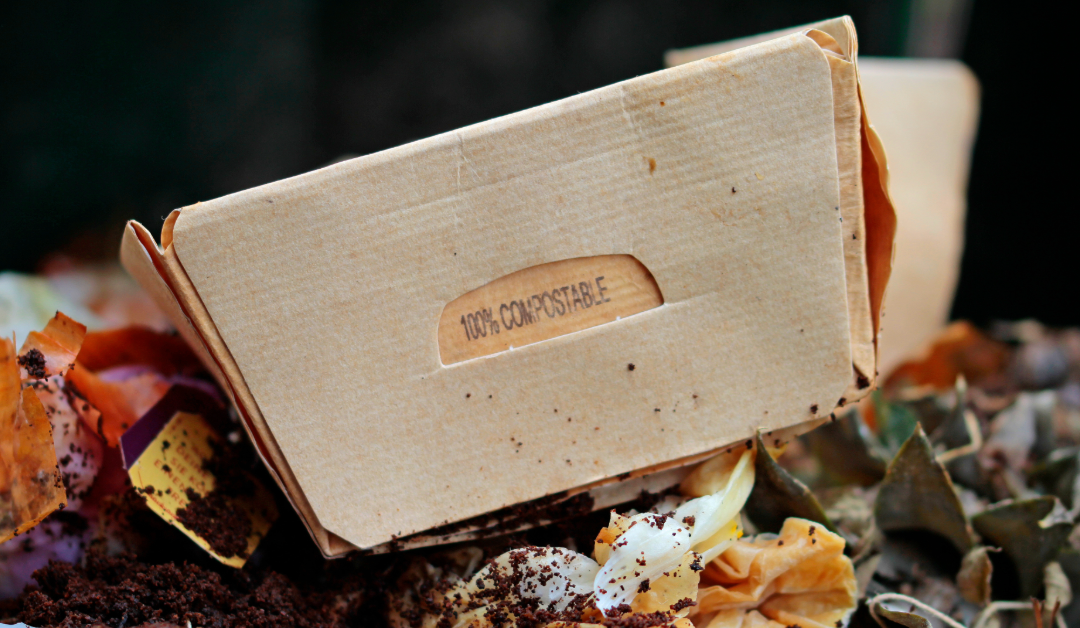What’s the Deal With All This “Green” Packaging?
Biodegradable. Compostable. Eco-friendly. Chances are, you’ve seen these words plastered across product packaging lately. From your favourite takeout containers to those sleek shipping mailers, everyone’s jumping on the green bandwagon. But here’s the million-dollar question—what do these terms actually mean, and is there real science backing them up?
Spoiler alert: yep, there is. And it’s actually pretty fascinating.
Biodegradable vs. Compostable: Let’s Clear the Confusion
These terms often get used interchangeably, but they’re not quite the same.
Biodegradable Packaging
- Breaks down naturally with the help of microorganisms (bacteria, fungi, etc.)
- Doesn’t require specific environmental conditions
- Might leave behind residue depending on the material
Compostable Packaging
- Breaks down under specific composting conditions (heat, moisture, oxygen, microbial activity)
- Turns into nutrient-rich compost (aka, black gold for soil)
- Must not leave toxic residue
Think of it this way: all compostable materials are biodegradable, but not all biodegradable materials are compostable.
The Science Behind the Breakdown
So, how do these materials actually decompose? Let’s get into the nitty-gritty without making it feel like a chemistry lecture.
The Role of Microorganisms
Microbes are the unsung heroes here. Whether it’s bacteria, fungi, or other microscopic decomposers, they feast on the organic materials in biodegradable or compostable packaging. As they munch away, they break complex molecules down into simpler ones—mostly carbon dioxide, water, and biomass.
️ Environmental Conditions Matter
Decomposition isn’t a one-size-fits-all process. A few key factors make a huge difference:
- Temperature: Higher temps = faster breakdown (especially in industrial composting facilities).
- Oxygen levels: Aerobic decomposition (with oxygen) is ideal for composting.
- Moisture: Too dry? Slows down. Too wet? Not great either. Think damp sponge.
Material Composition
Here are some common materials used in biodegradable and compostable packaging:
|
Material |
Origin |
Breakdown Time |
Compostable? |
|
PLA (Polylactic Acid) |
Corn starch or sugarcane |
90-180 days (industrial composting) |
Yes |
|
Bagasse |
Sugarcane pulp |
30-60 days |
Yes |
|
PBAT (Polybutylene adipate terephthalate) |
Fossil-fuel-based but biodegradable |
Varies |
Not always |
|
Paper/Cardboard |
Wood pulp |
Weeks to months |
Yes (if untreated) |
Industrial vs. Home Composting: Big Difference
Let’s bust a myth: just because a package says “compostable” doesn’t mean it’ll vanish in your backyard bin.
✅ Industrial Composting
- High heat (130°F+)
- Controlled humidity and oxygen
- Rapid microbial activity
- Great for PLA and thicker items
Home Composting
- Slower, cooler process
- Limited to food scraps and light compostable items
- Not ideal for most bio-plastics
If it says “compostable,” check if it’s home or industrial—that little label makes a big difference.
Certifications That Actually Mean Something
To avoid greenwashing, look for these legit eco-certifications:
- BPI Certified Compostable (U.S.): Trusted third-party certification
- TÜV Austria OK Compost (Europe): Certifies for both industrial and home compostability
- Australasian Bioplastics Association (Australia): Certifies for both home and industrial compostability
If it doesn’t have a label, proceed with caution. Just because something “looks eco-friendly” doesn’t mean it’ll disappear in your compost pile.

BPI Certified Compostable (US)
Trusted third-party certification

TÜV Austria OK Compost (Europe)
Certifies for both industrial and home compostability

Australasian Bioplastics Association (Australia)
Certifies for both industrial and home compostability
Benefits of Biodegradable and Compostable Packaging
Alright, so why is this stuff a big deal anyway? Let’s count the ways:
Environmental Wins
- Reduces landfill waste
- Cuts down plastic pollution in oceans and wildlife habitats
- Creates compost to improve soil health (when done right)
️ Brand Perception & Consumer Demand
- Today’s consumers care—big time—about sustainability
- Eco-packaging = competitive edge for businesses
- Shows commitment to planet-friendly practices
♻️ Supports Circular Economy
- Unlike traditional packaging, which often ends up as trash
- Compostable items can feed the soil and help grow more food—a full circle!
Potential Downsides? Yep, They Exist
Let’s keep it real. Biodegradable and compostable packaging isn’t a perfect solution. Some things to watch out for:
- Greenwashing: Products labelled “biodegradable” might take years to break down—or only under perfect lab conditions.
- Contamination: If compostable packaging gets mixed with regular plastic waste, it can mess up recycling streams.
- Infrastructure Gap: Most places don’t have proper composting facilities, especially for industrial compostables.
- Energy Use: Some bio-plastics still require significant energy and water to produce.
Smart Tips for Consumers and Businesses
For Consumers:
- Look for certified compostable logos
- Only compost items marked for home composting in your backyard bin
- Avoid tossing compostables in the recycling bin—it contaminates the stream
For Businesses:
- Educate your customers on how to dispose of packaging
- Choose suppliers with certified materials
- Explore reusable or refillable options for added sustainability
What’s the Bottom Line?
Biodegradable and compostable packaging is more than just trendy—it’s part of a bigger shift toward sustainability. But it’s not magic. It requires the right materials, the right conditions, and a good chunk of public awareness to really work.
And let’s be honest: the greenest packaging is the one you don’t need at all. Reusables still reign supreme. But when disposables are necessary, choosing certified compostable or truly biodegradable options is a big step in the right direction.
Let’s Wrap It Up (Sustainably, Of Course)
Biodegradable and compostable packaging has the potential to shrink our footprint and shift us toward a more regenerative way of living—if we use it wisely. The science is real, the benefits are clear, but there’s still work to do in infrastructure, education, and accessibility.
Ready to be part of the solution? Start by asking the right questions, reading the labels, and spreading the word.
Got questions about packaging, sustainability, or going green as a brand? Shoot us a message—We’re all ears
Till next time,
The team at Hi-Tech Packaging

